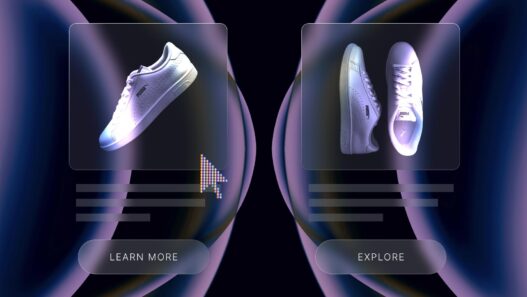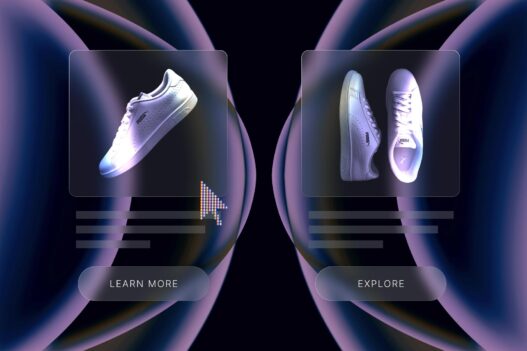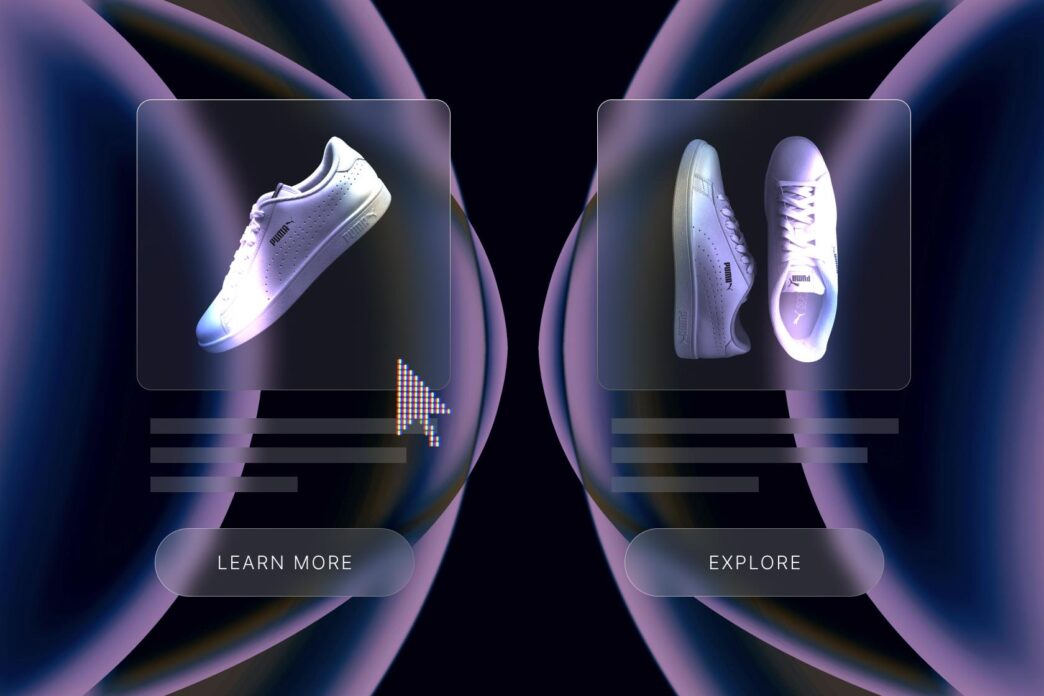Digital advertising relies on delivering the right message to the right person at the right time. As consumers expect more relevant and timely experiences, creative strategies have become more complex. Dynamic ads have introduced a new level of customization and scale, requiring a different approach to creative production and management.
For those exploring how to architect modular creative playbooks for dynamic ads, understanding the structure behind these systems is foundational. The modular approach is not about creating one-off assets but about building a flexible architecture that can adapt to many audiences and contexts.
This article explores the structure, rules, and processes that define modular creative playbooks for dynamic advertising.
What Is a Modular Creative Playbook
A modular creative playbook is a systematic framework for organizing creative assets into interchangeable components. These components, called modules, include elements like headlines, images, calls to action, backgrounds, or product details. Each module works with other modules in various combinations.
Traditional static creative produces fixed, single-use ads. A modular creative playbook breaks down creative into reusable parts. This structure enables the assembly of many ad variations from a limited set of modules, rather than designing every version from scratch.
Modular playbooks allow automated systems to select and combine modules based on data, context, or audience signals. This approach makes it possible to personalize ads at scale while maintaining consistent brand integrity.
Why Modular Design Powers Dynamic Ads
Modular design makes it possible to produce many ad variations without increasing resource requirements at the same rate. A small team can generate hundreds or thousands of unique ad combinations by working with interchangeable creative pieces. This contrasts with static design, where every new ad variation requires a separate design and production process.
Dynamic ad systems can assemble creative modules on demand, matching the right combination to each viewer based on data like location, browsing history, or device type. Because modules are already built to fit together, the system can quickly respond to changing audience needs or campaign goals.
Testing efficiency improves with modular design because each creative element can be swapped and measured independently. This enables multivariate testing, where systems analyze how different headlines, images, or offers perform in various combinations.
When to Deploy Modular Creative in Your Media Mix
Modular creative systems work best when campaigns require flexibility, variation, or adaptation to different audiences and contexts. They prove most effective when testing different messages, targeting diverse audience segments, or updating creative assets quickly.
Prospecting Campaigns
In prospecting campaigns, advertisers reach new audiences who have had little or no prior contact with a brand. Modular creative helps test different headlines, images, and calls to action by mixing and matching these elements into multiple ad versions. This identifies which combinations work best for unfamiliar audiences.
Retargeting Campaigns
Retargeting campaigns focus on individuals who have already interacted with a website or app. Modular creative allows for ads that reference past user actions, such as products viewed or content engaged with. By swapping in relevant modules, ads can display messages that connect to each user’s previous behavior.
Seasonal or Promotional Bursts
When campaigns tie to short-term events, holidays, or sales, modular creative enables quick deployment. Pre-built modules for seasonal themes, special offers, or time-limited messages can be inserted into existing templates. This lets advertisers update or launch new creative across channels quickly.
Key Components of a Modular Asset Library
A modular asset library is a structured collection of creative elements that combine in different ways to produce dynamic advertisements. Each component type serves a specific function and is designed to be interchangeable with other elements in the same category.
Imagery Variations
- Product shots: Images that display a product clearly and in detail
- Lifestyle images: Photos showing the product in use, often with people, to suggest real-world context
- Backgrounds: Visuals that appear behind the main content, such as patterns, textures, or solid colors
- Contextual visuals: Images that relate to specific environments, seasons, or locations
Copy Blocks
- Headlines: Short, attention-grabbing statements that introduce the main idea
- Body text: Sentences providing additional information about the product or offer
- Value propositions: Phrases explaining the unique advantage of the product or service
- Messaging variants: Different text versions tailored for specific audience segments
CTAs and Offers
- Action-oriented buttons: Graphics or text like “Shop Now,” “Learn More,” or “Sign Up”
- Promotional messages: Text highlighting discounts, free shipping, or other incentives
- Urgency elements: Phrases such as “Limited Time Only” or “Ends Soon”
Metadata and Taxonomy Rules for AI Ready Assets
A structured tagging system organizes creative assets so automated systems can select and assemble the right components for each ad variation. Metadata describes each asset with information that helps AI match creative modules to specific audiences, contexts, and campaign requirements.
Different approaches exist for metadata in modular creative systems:
| Metadata Approach | Structure | Use Case Example |
|---|---|---|
| Flat Tagging | Single list of tags | “summer”, “headline”, “sale” |
| Hierarchical Taxonomy | Parent-child categories | “Audience: Teens > Female” |
| Attribute-Value Pairing | Key-value pairs | “Tone: Playful”, “Device: Mobile” |
Audience Segment Tags
These tags classify assets based on intended group characteristics. Demographic tags include age, gender, or income level. Psychographic tags describe interests, values, or lifestyles. Behavioral tags identify user actions such as past purchases or site visits.
Contextual Signals
Contextual signal tags describe circumstances where an ad is shown. Tags include time of day, weather conditions, location, device type, and platform. These signals help personalize content based on the viewer’s immediate situation.
Creative Tone and Style Codes
These codes categorize assets by mood, visual appearance, or messaging approach. Emotional tone tags may include “excited,” “calm,” or “urgent.” Visual style tags can specify “minimal,” “vibrant,” or “corporate.” Messaging approach codes classify assets as “educational,” “promotional,” or “informative.”
6 Steps to Architect and Launch a Dynamic Creative Playbook
Launching a dynamic creative playbook involves a repeatable process where each step builds on the last, creating a structure for producing, delivering, and refining modular ads.
1. Audit Existing Assets
The process begins by taking stock of all current creative materials, including images, videos, copy, logos, and other brand assets. Each asset is reviewed to determine if it fits a modular format or can be separated into smaller parts for future use.
2. Define Templates and Layouts
Standardized templates are developed to organize modular components. Each template outlines designated placement areas for images, headlines, call-to-action buttons, and other creative elements. Templates ensure visual consistency across all ad variations.
3. Build the Modular Library
New assets are created or existing ones adapted to follow modular design principles. Each asset is cataloged and tagged with metadata describing its characteristics, such as audience, context, and style. This library serves as the source for assembling dynamic ads.
4. Configure the DCO Platform
Dynamic creative optimization (DCO) technology is set up to assemble ads using the modular library. Business rules and logic are programmed to determine which modules combine for each impression. The DCO platform relies on pre-defined rules and available asset metadata.
5. Launch and Monitor Live Variants
Creative variants are launched across selected media channels. Performance tracking protocols monitor metrics such as clicks, impressions, and engagement. Data is collected to see how each module and combination performs.
6. Iterate Based on Performance Data
Performance data is analyzed to identify which modules and templates are effective. Insights are used to adjust, replace, or redesign underperforming assets. The playbook is updated with improved modules, templates, and rules.
Design Rules to Keep Every Combination On Brand
Modular creative systems use individual pieces that can be mixed and matched in many ways. Clear design rules ensure every possible combination remains visually and tonally consistent.
Consistent Visual Hierarchy
Visual hierarchy refers to how elements are arranged to show their importance. Templates maintain proportional relationships—such as headline size compared to body text—even when different content is swapped in. Images, headlines, and calls to action always appear in the same positions with consistent spacing and alignment.
Color and Typography Guardrails
Color palettes and font choices are set in advance for all creative assets. Approved colors apply to all backgrounds, text, and buttons to maintain recognizable branding. Font families, sizes, and spacing remain the same regardless of which text or language is used.
Accessibility Considerations
Accessibility means content is easy to read and understand for everyone, including people with visual impairments. Contrast ratios between text and background colors are checked so text remains legible. Font sizes and line spacing support readability across devices and screen sizes.
Testing and Optimization Framework for Continuous Improvement
A modular creative system uses data and testing to determine which ad components perform best over time. This process relies on structured experimentation, performance monitoring, and clear metrics that go beyond surface-level indicators.
Multivariate Testing Cadence
Multivariate testing tests multiple creative elements and their combinations simultaneously. Experiments are set up so every variable—headlines, images, or calls to action—can be swapped independently. Data is collected for each variation to see which modules and combinations drive performance changes.
Creative Fatigue Tracking
Creative fatigue occurs when audiences stop responding to an ad because they’ve seen it too often. Monitoring involves tracking key engagement metrics over time. When clicks, conversions, or view times drop, it may indicate audiences are no longer interested in certain creative combinations.
Success Metrics Beyond CTR
Click-through rate (CTR) measures how often people click on an ad, but it doesn’t provide a complete view of creative effectiveness. Additional metrics include:
- View-through conversions: When someone sees an ad and completes a desired action later without clicking
- Brand lift: Changes in brand awareness, preference, or recall after exposure to the creative
- Customer lifetime value: The total value a customer brings over their relationship with the brand
Common Pitfalls and How to Avoid Them
Building modular creative playbooks involves several challenges that can impact campaign outcomes if not addressed early.
Metadata Gaps
Metadata gaps occur when creative assets aren’t tagged correctly or consistently. If some modules lack necessary tags or use different naming conventions, the automated system has trouble assembling the right ad combination. This can result in incorrect or irrelevant ads being shown.
Over Templating
Over templating happens when templates are designed with very strict structures. This rigidity can make all ads look very similar, even if the content within each module changes. When templates restrict how modules fit together, creative teams have less flexibility to adapt messages for different audiences.
Insufficient Variant Volume
Having too few creative modules in the library means the same combinations repeat frequently. This repetition can cause audience fatigue, where viewers stop paying attention because they see the same content too often.
The Future of AI Driven Creative Personalization
Emerging technologies in digital advertising are changing how creative assets are produced, assembled, and delivered. Modular creative systems will use more advanced artificial intelligence and data methodologies to make advertising more responsive and relevant.
Predictive Creative Analytics
Predictive creative analytics uses artificial intelligence to forecast which combinations of creative modules will perform best before any ad is shown. AI models analyze historical campaign data, audience engagement patterns, and contextual signals to generate recommendations for creative modules likely to drive higher engagement.
Privacy First Data Signals
With changes in privacy regulations and the reduction of third-party cookies, personalization is shifting toward privacy-first data signals. These methods rely on first-party data collected with user consent, such as website interactions or email engagement. Contextual targeting also plays a larger role, using information like page content, device type, or location to select creative modules.
Get in Touch to Discuss Performance With AUDIENCEX
AUDIENCEX’s AXi suite combines modular creative architecture with advanced AI to support performance-driven dynamic advertising across channels. The platform uses privacy-safe data and machine learning to optimize creative combinations automatically. For more information or to discuss campaign needs, visit: https://audiencex.com/contact
FAQs About Modular Creative Playbooks
How much budget should I allocate to modular asset production?
Modular asset production often involves higher upfront creative costs because multiple interchangeable elements are designed and built at the start. Over time, these reusable components lower ongoing creative expenses since assets can be repurposed across different campaigns.
How long does it take to see performance lift from dynamic creative optimization?
Most campaigns experience measurable performance improvements within a few weeks as the system analyzes data, learns audience preferences, and adjusts creative combinations automatically.
Which dynamic creative optimization platforms integrate best with existing ad servers?
Dynamic creative optimization platforms usually offer native integrations with major ad servers and demand-side platforms. The ease of integration depends on the features and setup of the current technology stack.
Can modular creative work without third party cookies?
Modular creative can function without third party cookies by using first-party data, contextual signals, and privacy-safe audience targeting methods to personalize ads.
What internal team roles are required to manage modular creative playbooks?
Managing modular creative playbooks involves creative teams to develop assets, data analysts to interpret performance data, campaign managers to oversee execution, and technical specialists to maintain the platform and workflows.

















